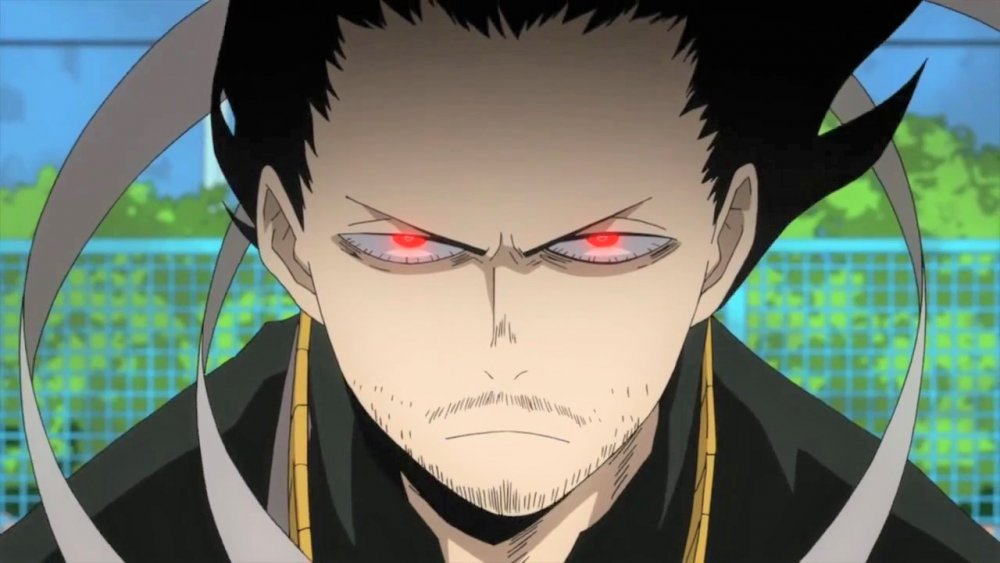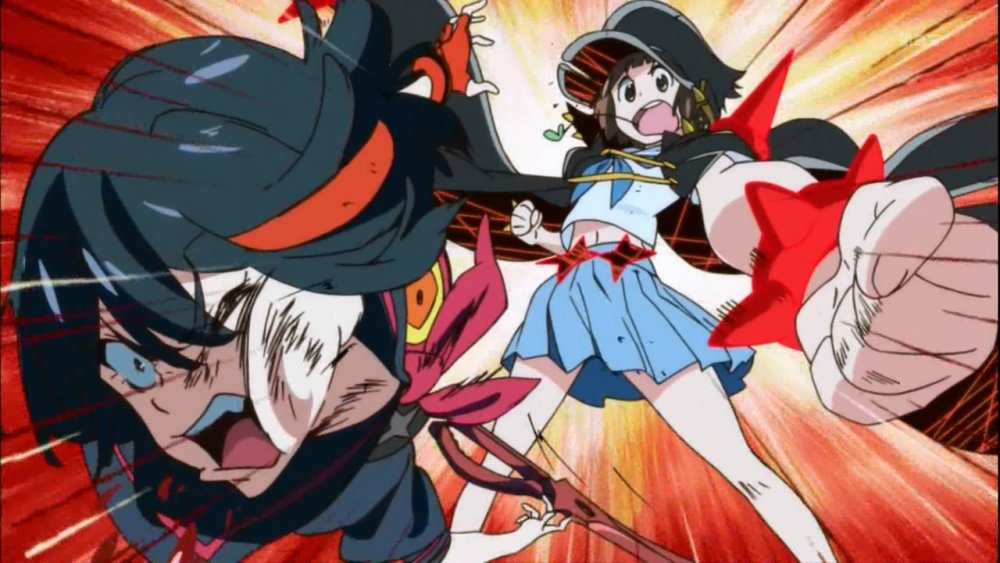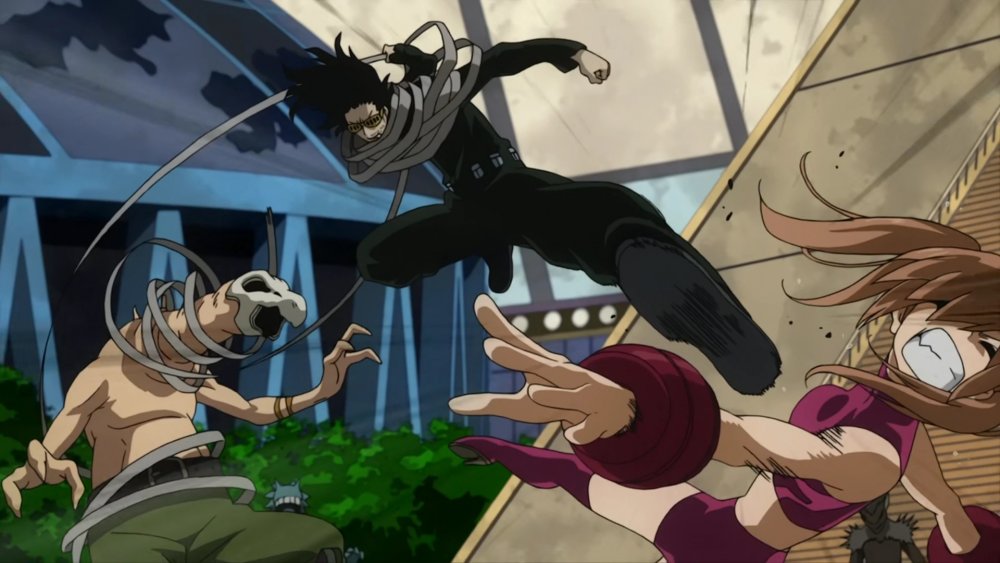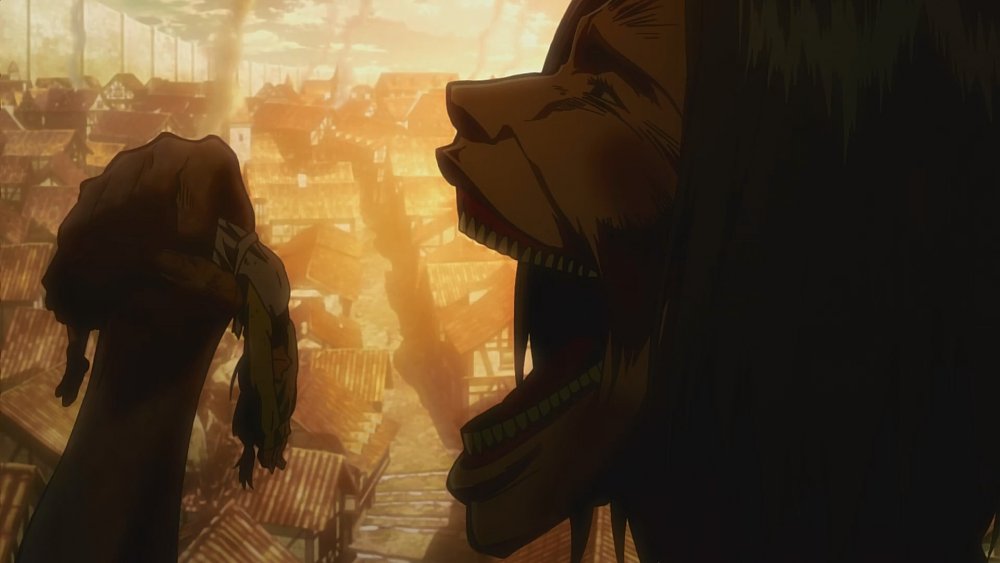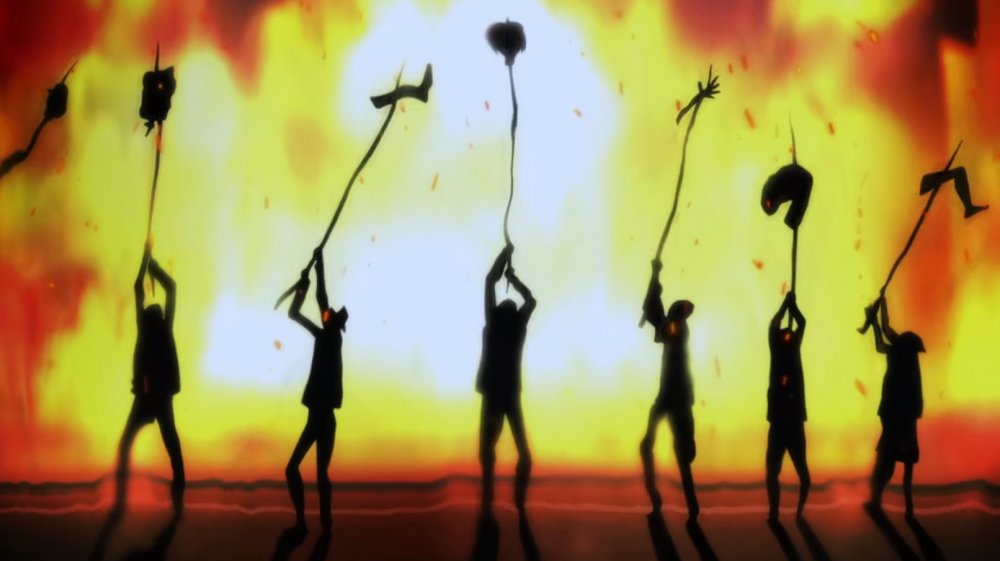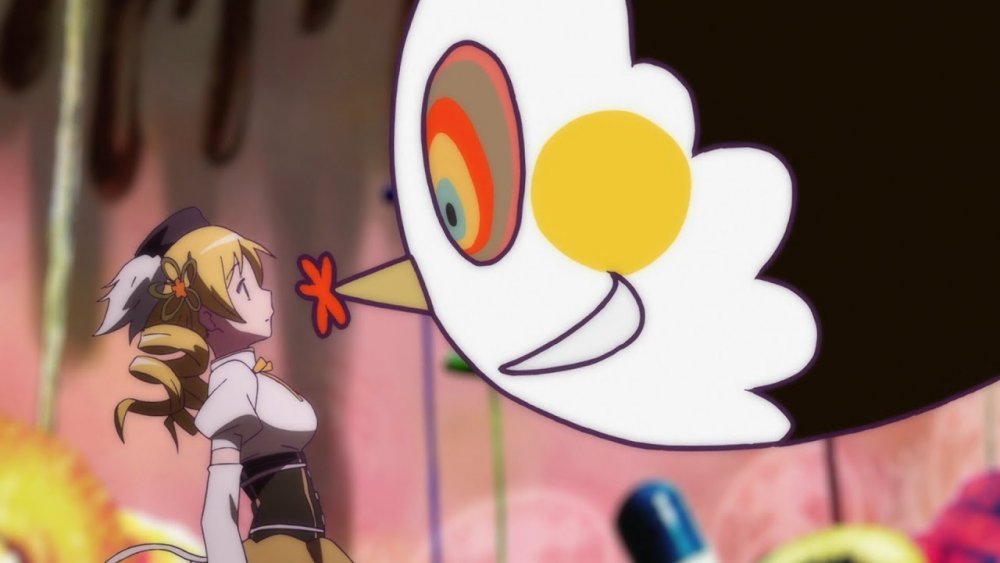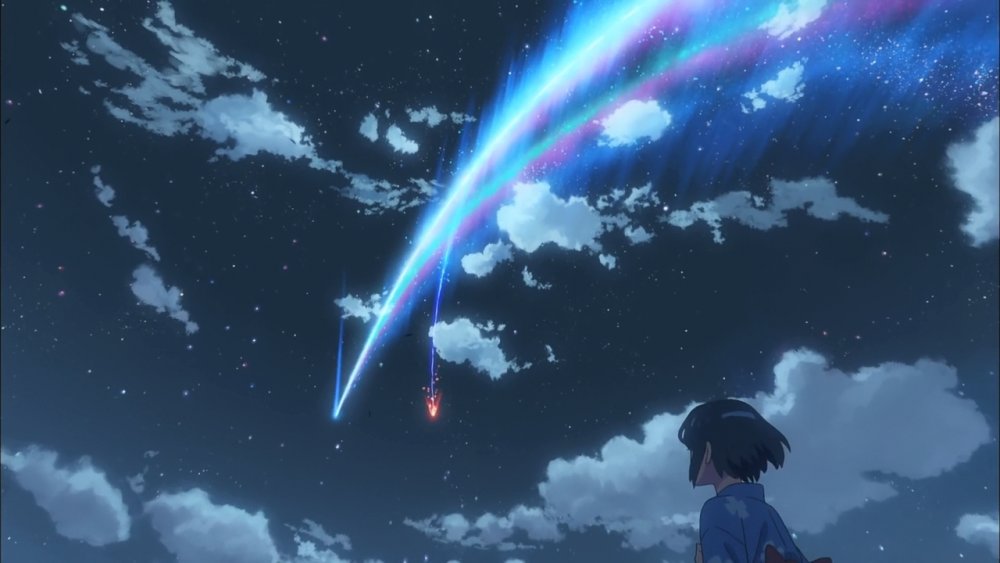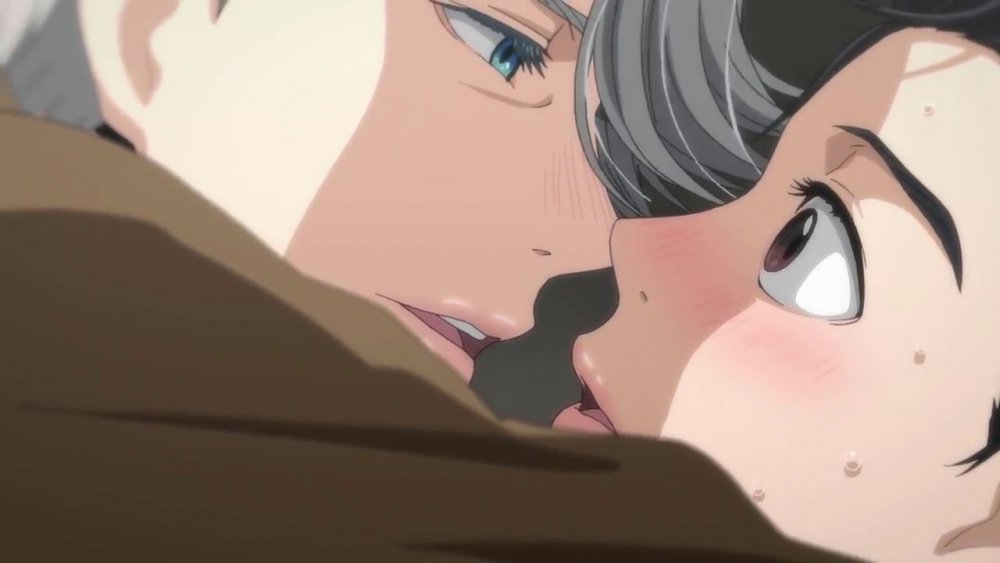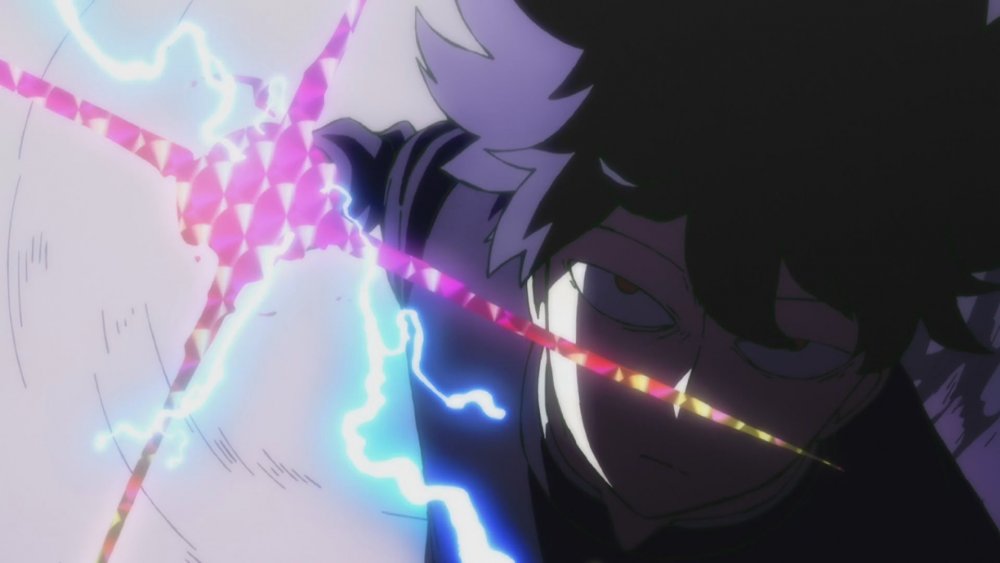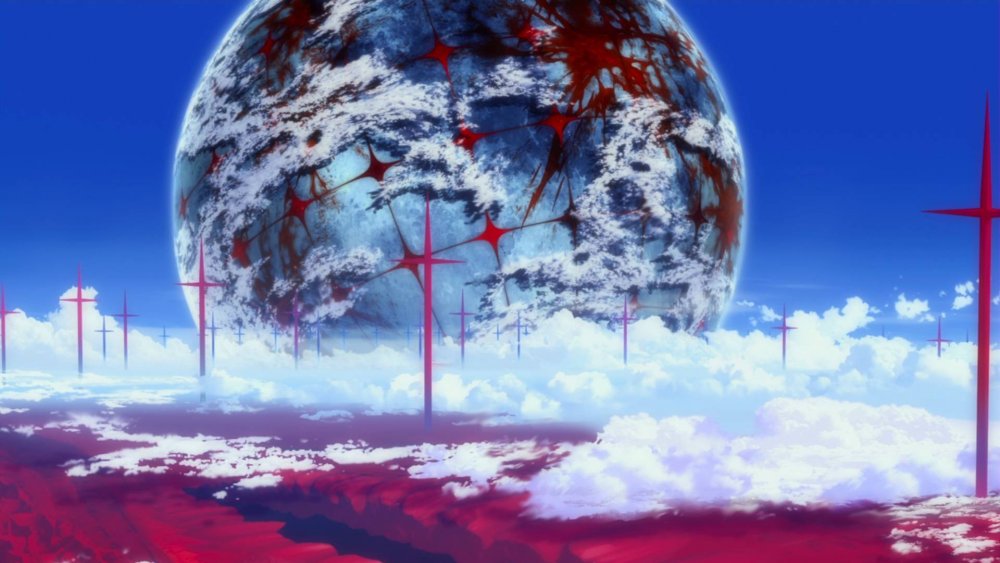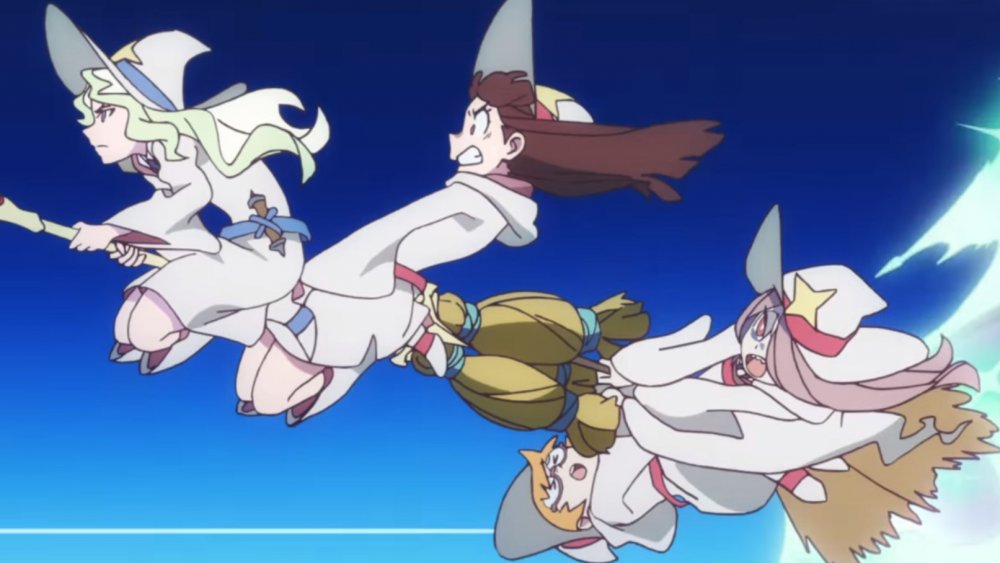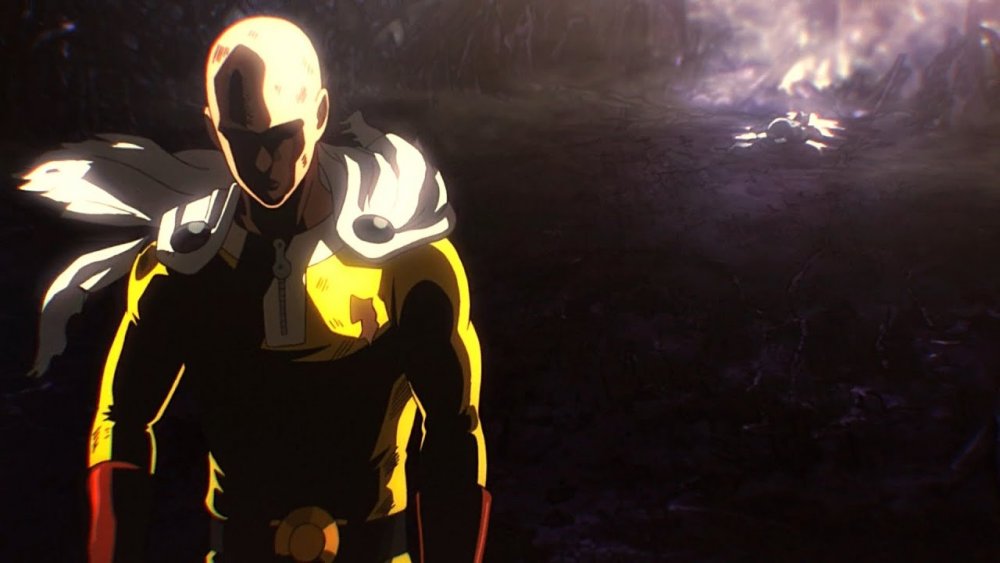The Most Unbelievable Anime Moments Of The Last Decade
Anime reached stratospheric highs in the 2010s, propelled by work of every genre, length, and audience. Studio Ghibli released new movies, a new Sailor Moon series debuted, and somehow, Jaden Smith, Susan Sarandon, Jude Law, and Steve Buscemi all ended up starring in an anime about a fashionisto who drinks caprese salad-flavored martinis. That's the sort of new ground anime, having cemented its grip on audiences worldwide, was able to cover.
Before we let ourselves dream of all the anime the 2020s will bring us, let's take a moment to reflect on the highs of the 2010s. And yeah, there were a whole lot, all powered by animation of ultramodern quality and accessible via the streaming revolution to a degree they'd never been before. What superheroic smackdown won our hearts in My Hero Academia? What romance swept us away so entirely that we learned the difference between a quadruple toe loop and a quadruple flip? Was there ever a time Saitama needed more than one punch to take a bad guy down? Join us as we explore the most jaw-dropping, eye-popping, utterly unbelievable moments of anime in the 2010s, from the tragic deaths to the stirring triumphs.
Mako powers up in Kill la Kill
Choosing one moment from Kill la Kill to serve as its most unbelievable is a bit of a fool's errand. after all, this is an anime in which a sentient school uniform is a main character, and a paramilitary cell of nudists are the last hope for freedom. It's more like a fever dream than a coherent story, leaving the viewer with fragmented memories of fashion as fascism, evil couturiers, and at one point, a baby pink 1959 Cadillac Eldorado.
But if there's to be one moment chosen as the single coolest, strangest, most arresting of Kill la Kill's buffet of bombast, it's the one in which Mako Mankanshoku, comic relief par excellence, becomes the most formidable person on the battlefield. A bright-eyed goofball, Mako becomes the reluctant president of the school's fight club, and she finds she's good enough at it to be granted one of the series superpowered "goku" uniforms." It's a one-and-done escapade until episode 22, when the uniform returns at a moment of crisis. Modeled after the archetypal "bancho," or juvenille delinquent boss, it features a spiked coat, brass knuckles that spell out "MAKO," and an ever-present sprig of grass for Mako to prop menacingly between her lips. Mako goes on to kick butt, powered by sheer audacity and over-the-top style. It's insane, it's amazing, it's absolutely nonsensical, and so it's Kill la Kill at its most Kill la Kill.
Aizawa takes down the League of Villains in an unbelievable action scene
Setting your story in a school for superheroes guarantees a plethora of awe-inspiring action scenes. Sure, there are a lot of other reasons to love My Hero Academia, from protagonist Deku's ironclad belief in doing the right thing to the delight of watching teenagers with explosive sweat and the ability to pull tape out of their elbows navigate dating. But be honest. When you think of this anime, you think of All Might saving the day, Todoroki's ice powers turning arenas into tundras, and Deku delivering his very first "100 Percent Smash" to save a bereaved grade-schooler.
Picking a standout moment is tough, but one distinguishes itself early on. We're talking about the scene when Aizawa, class 1-A's teacher, emerges from his deadpan, eye-bagged cocoon of dispassion to defend his students from the League of Villains. Aizawa's quirk, the ability to erase superpowers by looking at their user, had always been intriguing, but seeing him use it in tandem with the steel-enhanced fabric strips he wears around his neck is fist-pumpingly cool. This is the dude introduced in a sleeping bag outside his classroom door. So seeing him let loose an absolute barrage of acrobatics, martial arts, and Spider-Man-style captures isn't just awesome, it's jaw-dropping. He might not be as peppy as teachers like Present Mic, nor as universally admired as All Might, but when his students need him, he's there to throw down like no one else in the series can.
Eren's mom falls to the Titans in one of anime's most devastating moments
Attack on Titan wastes no time in establishing a sense of dread. Viewers are introduced to the battered state of humanity right off the bat, herded behind the walls that protect them from the mindlessly violent Titans. Life is short, brutal, and constantly clouded by anxiety, making the high-risk life of the Survey Corps — those who range beyond the walls' shelter — a surprisingly attractive contrast. If you die out there, at least you get to have died trying to forge a better world.
One would guess, then, that death wouldn't pack much of a punch in a series so weighted with grief. But the death of Carla, protagonist Eren's mother, at the end of the series' first episode is anything but expected. Crushed by her collapsing house, she urges Eren and her adopted daughter Mikasa to escape as a Titan approaches. They're whisked away by a Survey Corps member, but not before they, and the audience, watch the Titan pull Carla from the wreckage, break her into immobility, and eat her in one terrifying, bloody bite. It's one thing to hear about the terror of the Titans, but it's another thing entirely to see it in action. Thus begins Attack on Titan — shocking, tragic, and surprising at every turn.
The mob claims an innocent in one of the decade's most disturbing scenes
Masaaki Yuasa's adaptation of Go Nagai's classic Devilman manga is one of the most terrifying anime you can watch, and it makes its unique vision clear right out of the gate. The swaths of flat color and kaleidoscopic imagery that so mark Yuasa's work are on full display, as is his willingness to break from established tradition (in this case, other Devilman adaptations) to tell his story however he fancies. The number of standout moments is vast, from sensual dream sequences to freestyle rap that's as full of foreshadowing as it is legitimately listenable.
However, one scene stands above the rest as truly unbelievable. It comes in the penultimate episode, "Go to Hell, You Mortals," in which Akira, the titular Devilman, has had his demonic powers revealed to the public. Humanity plunges into violent revolt, resulting in a mob murdering Miki, Akira's friend and love interest. When he arrives at her house, he's greeted by one of the series' most indelible images: Miki's head on a pike, backlit by the inferno that was her home. Crybaby is a story about savagery, that of humanity, demonkind, loved ones, and one's self. Yet for all its scenes of violence and destruction on literally cosmic scales, it's this moment of one ordinary girl's death that scorches the soul and sets in motion the series' final descent into tragedy.
Mami's untimely death was unbelievably upsetting
Puella Magi Madoka Magica might not have been the first series to deconstruct the magical girl genre, but in one succinct season, it quickly established itself as one of the best. No character symbolizes its appeal better than big-eyed Mami Tomoe, and no scene sums up its brutal approach of the genre better than her death.
Mami is every cherished ideal of the magical girl incarnate, from her springy pigtails to her fabulous powers, but as the third episode, "I'm Not Afraid of Anything Anymore," reveals, that's not all it's cracked up to be. Sure, she's a petticoated soldier of justice with an adorable alien sidekick, but she's crushingly lonely, and the relief that floods her when Madoka promises to stay by her side from there on out is so potent that it gives the episode its title. It's tender, memorable stuff, and deft foreshadowing of Madoka's ultimate role to boot. But what changes everything, from Madoka's storyline to the course of 2010s anime, is what happens next. Mami is beheaded by Charlotte, a witch who will be revealed to have once been a magical girl herself, as our horrified heroines watch. It's a statement of purpose, a sign of things to come, and a massive raising of stakes, but beyond that, it's shocking and remains so to this day.
The incredible comet moment in Your Name
An anime movie not made by Studio Ghibli taking the world by storm is news enough, but one that does so while centering on a complex time travel plot? That's positively groundbreaking. But that's what happened with Your Name, Makoto Shinkai's luminous tale of a boy and girl who wake up in each other's bodies, hundreds of miles apart. It's an oddball premise that juggles a lot of story threads — you've got to remember who's in whose body, what storylines involve what relatives, and who has friends beginning to suspect something — before the fact that the lovers are unknowingly communicating across a gap of three years is even introduced.
These threads braid together at the movie's midpoint, when our male lead decides to travel to his lady love's hometown. What he finds there is unveiled in the movie's most astonishing scene. The town was destroyed three years earlier by a rogue comet, a moment that unfolds across the screen from the female lead's point of view. All of Your Name is beautiful, but the comet, streaking through cloud cover like a dropped diamond, is truly stunning. One is awestruck, like our heroine, watching it descend ... then horrified as everything the movie had centered around is irreparably broken. It's the moment Your Name becomes the unforgettable story that international audiences embraced, and it's the moment that lingers long after the credits roll.
Love is sealed with a kiss in one of anime's most romantic scenes
No one knew quite what to expect from Yuri on Ice when it premiered. Its cast and crew were stacked with talent, most prominently in the form of director Sayo Yamamoto, the auteur behind The Woman Named Fujiko Mine and Michiko & Hatchin. But Yuri is so different in everything from length to setting, not to mention the fact that it wasn't based on an existent manga that could be picked apart for clues.
In time, Yuri on Ice revealed itself as tender tale of ambition and artistry. But its seventh episode makes it clear that it's primarily a love story and all the stronger for it. As Yuri, the earnest figure skater studying under Russian great Victor, concludes an ambitious performance, Victor runs out on the ice and kisses him. Romance had been bubbling between the two from the first episode, but there was no reason to believe it would manifest as anything but the sort of ambiguous tension common to this sort of anime. But there was the kiss, establishing Yuri on Ice as a definitive romance and one willing to throw typical love story structures of flirt-conflict-kiss-finale out the window. Yuri and Victor's story would go on to be one of the most celebrated of the decade, with the kiss as its jubilant statement of intent.
Mob goes 100 for the first time
In many ways, Mob Psycho 100 is successful for breaking the rules of anime. Mob, whose name is a pun on a Japanese term for "background character," is a monochromatic middle-schooler with a bowl cut and a blank expression. He is the exact opposite of a protagonist in all ways except one: He's an exceptionally powerful psychic, and his milquetoast ways are all maintained to keep his abilities under control.
From the first episode, Mob Psycho 100 is a countdown to the moment he can't keep his powers in check any longer. And the first time he reaches 100 does not disappoint, and though Mob goes on to reach that point repeatedly over the course of the anime's two seasons and multiple OVA episodes, there's still something uniquely powerful about that very first time. It comes in the first season's third episode. Mob is pushed to his limit by a cult that insists on making him laugh, but they only manage to tip him over into 100. His eyes fill with light, the ground around him cracks, and the assault of the cult leader, empowered by the demon who possesses him, falls upon the unbreakable wall of his psychic energy. As Mob tells him, crackling with power, this is what happens when his emotions are brought to the surface. The cult doesn't forget it, and neither does the audience.
The Third Impact is revealed
Ostensibly a retelling of the legendary anime series, the Rebuild of Evangelion movies have made changes to the source material from the beginning. But Evangelion 3.0: You Can (Not) Redo swerves off the beaten path so dramatically that it lands in an entirely new forest. Essentially, the entire movie qualifies as one of the most unbelievable anime moments of the decade, but if a singular one must be chosen, it has to be the moment when Kaworu escorts Shinji out of NERV HQ and into the ravaged wasteland the world has become.
As Kaworu explains, Shinji, who's been in stasis since the second movie's end, set off the Third Impact 14 years prior, triggering the apocalypse. The moon has come closer and appears to be stained with blood, the land is littered with odd, frozen figures that look like headless Evangelion units, and though there isn't a tree or flower to be found, there are strange, anatomical features growing from the ground, including a mile-long mouth like a great, toothy canyon. It's a nightmare only Evangelion could create, and it shocks both Shinji and the audience, as we're utterly unprepared for this reimagining of the Third Impact. NERV's machinations are tossed aside, Shinji's struggle is entirely disassembled, and the future of the series is made suddenly opaque. There are only the ashes and the boy who caused them, pleading to be forgiven.
The witches race a rocket in Little Witch Academia
Anime doesn't get much more delightful than Little Witch Academia, Studio Trigger's gleeful journey into magic, mayhem, and boarding school. Protagonist Akko acts as a winsome guide to the world of Luna Nova Academy, in which fairies run the cafeteria (but go on strike to demand a larger share of magical power), relay races are conducted on brooms, and dragons aren't just real but capable of being loan sharks.
Those varied virtues aren't just charming, however. Everything that makes Little Witch Academia great comes to a head in the series finale, in which our heroines race against time to stop a nuclear missile from destroying the UK. They mount an enormous broom that acts as a multistage rocket and marshal their powers into a burst of magic so powerfully based in the goodwill of the world that it briefly covers the planet in an enormous smiley face. They might not all be great students, nor are they always the tightest of friends, but they come together when it matters most, and they find what unites them, and all of humanity, is far stronger than the petty disagreements of life. In other words, this deliriously cool sequence is Studio Trigger at its weirdest and most wonderfully inventive, and it's both the most fun you can have watching anime and a heartfelt capstone to a truly great story.
Saitama needs more than one punch in one of the decade's best anime moments
A cheeky, heartfelt look at the mythology of the superhero, One-Punch Man might just be the defining anime of the 2010s. Ask yourself, does anything speak more completely to the era's mingled sincerity and sarcasm than Saitama's now-iconic "okay" face? No wonder audiences fell in love with its killer combination of humor, action, and high-octane animation. Saitama could take out cosmically powerful mutants, but nothing got him more excited than a killer bargain at the supermarket.
But honestly, nothing captures that blend of awesomeness and absurdity better than the moment Saitama faces Lord Boros, his villainous counterpart in being utterly bored by his own supremacy. A prophecy has told Boros to find a worthy opponent on Earth, and so he journeys across the universe to Saitama's own A-City, which he promptly destroys. Saitama confronts him, the music swells, the battle begins, but Boros isn't taken out by one punch. The fight that ensues is a delirious showcase of animated action, the sort of throwdown in which Saitama being kneed so hard that he's thrown to the moon is only part of the spectacle. But the true moment of glory is Saitama unleashing his Serious Punch against Boros, himself gearing up to use his final attack, Collapsing Star Roaring Cannon. The punch is so strong that it part the clouds for thousands of miles and finally takes down Boros. One punch wasn't enough, and fans worldwide were delighted with one of the most epic anime fights of the decade.
